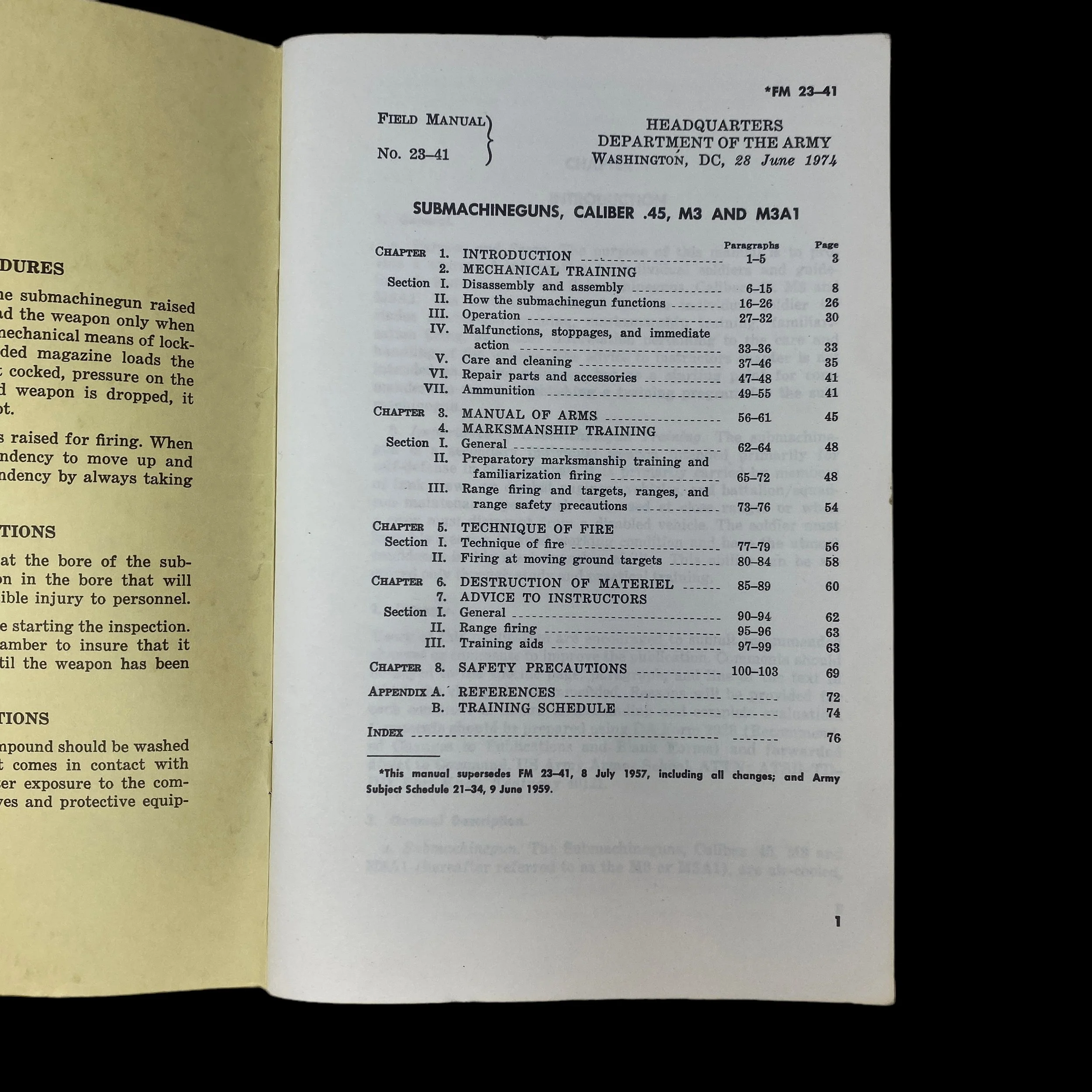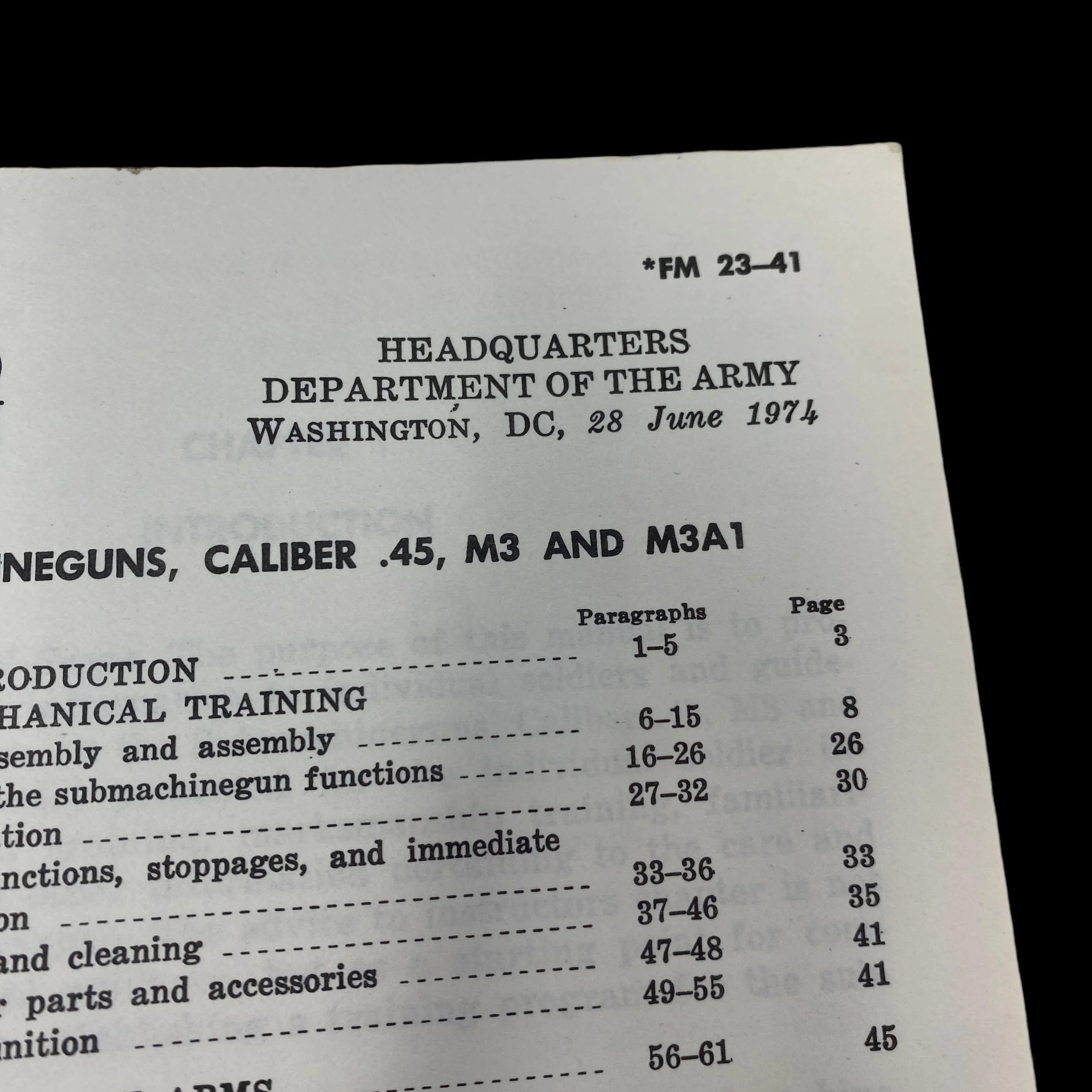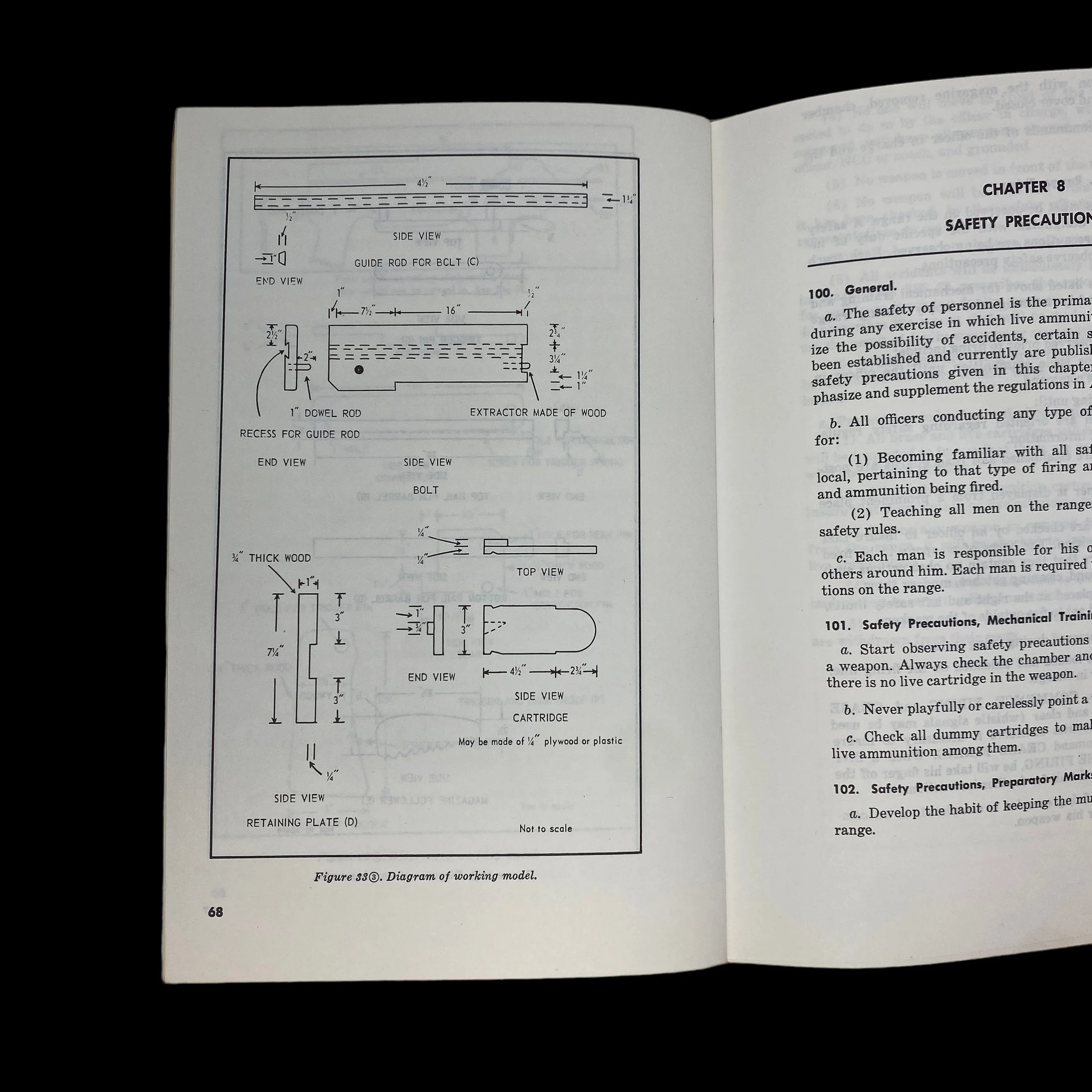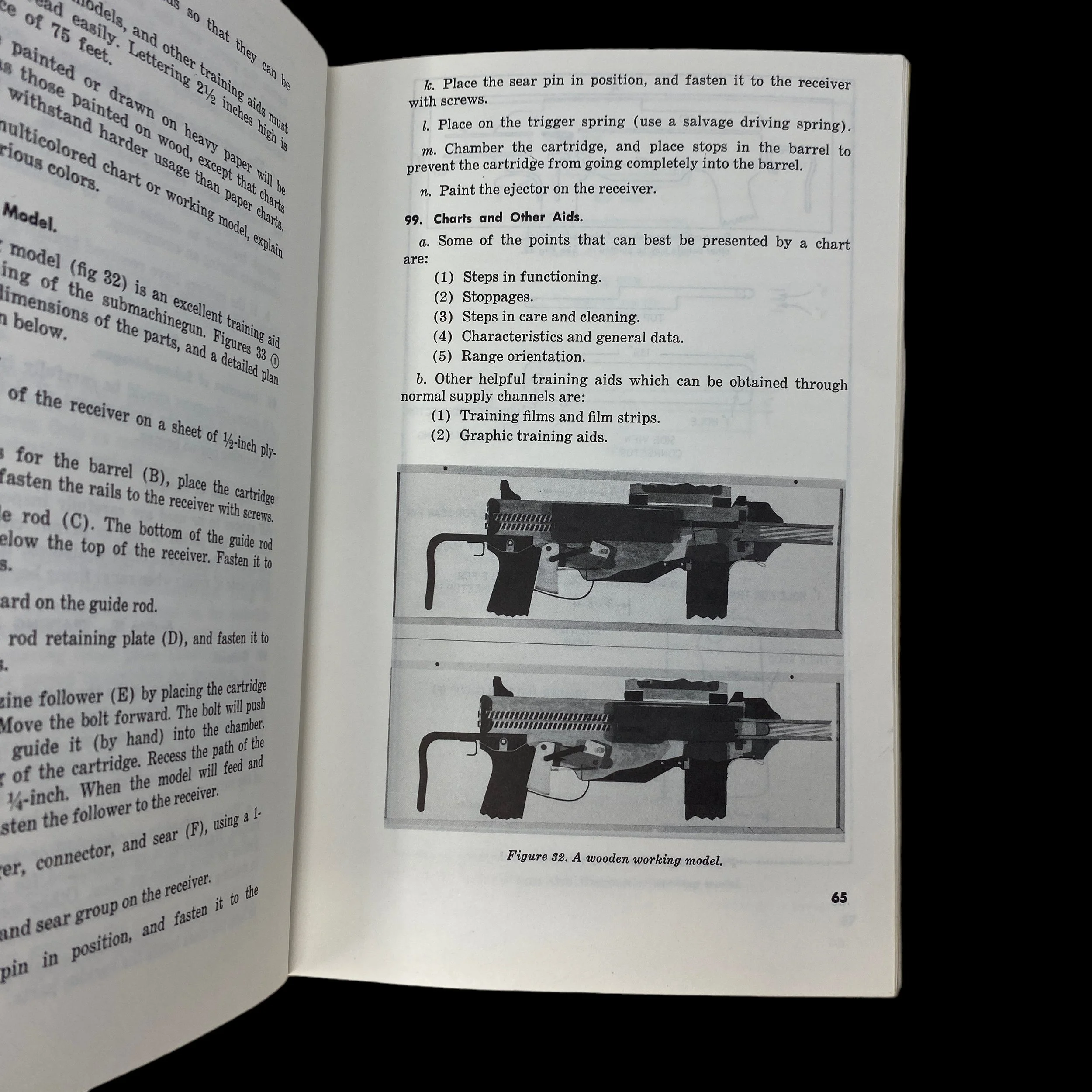RARE! Vietnam War June 1974 “SUBMACHINE GUN CALIBER .45 M3 & M3A1” - HEADQUARTERS DEPARTMENT OF THE ARMY


























RARE! Vietnam War June 1974 “SUBMACHINE GUN CALIBER .45 M3 & M3A1” - HEADQUARTERS DEPARTMENT OF THE ARMY
Comes with a hand-signed C.O.A.
This original and museum-grade Vietnam War artifact is an extensively produced informational field manual regarding the “SUBMACHINE GUN CALIBER .45 M3 & M3A1”
Dated June 1974 this manual was specially produced by the HEADQUARTERS DEPARTMENT OF THE ARMY - WASHINGTON D.C. 1974. What makes this more rare is that this manual supersedes the last U.S. Army manual that was produced in 1959. This manual was specially made to contain the most updated information and the latest techniques of the M3 AND M3A1 used in the Vietnam War.
This M3 & M3A1 manual extensively details: disassembling and assembling of the weapon, operation, malfunctions, repairs, care/cleaning, marksmanship, firing at moving ground targets, etc.
The Vietnam War, a protracted conflict that took place between 1955 and 1975, witnessed the deployment of a wide array of weapons, each designed to meet the unique challenges of the dense jungles and unconventional guerrilla warfare characteristic of the conflict. Among these weapons, the SUBMACHINE GUN CALIBER .45 M3 and its improved variant, the M3A1, played a significant role in the hands of American and allied forces.
The M3, commonly known as the "Grease Gun," was developed during World War II as a replacement for the Thompson submachine gun. Designed by George Hyde, Frederick Sampson, and René Studler, the M3 was intended to be a cost-effective alternative that could be produced quickly and in large quantities. The weapon featured a simple blowback operation and a caliber .45 ACP (Automatic Colt Pistol), making it compatible with the widely used Colt M1911 pistol ammunition.
The M3A1, an improved version of the M3, addressed some of the shortcomings of its predecessor. Introduced in 1944, it featured a collapsible wire stock, which enhanced maneuverability and facilitated storage. The M3A1 also had a forward pistol grip, making it easier to control during rapid fire. Both the M3 and M3A1 were relatively lightweight, compact, and easy to handle, making them suitable for the challenging terrain of the Vietnam War.
The M3 and M3A1 submachine guns found extensive use among American troops and their allies during the Vietnam War. These weapons were favored for their compact size, reliability, and close-quarters effectiveness. The submachine guns were particularly well-suited for jungle warfare, where the dense vegetation limited visibility and engagement distances.
Special forces units, such as the Green Berets and Navy SEALs, appreciated the M3A1 for its versatility in unconventional warfare. Its compact size allowed for easy concealment and mobility in confined spaces, making it an ideal choice for tunnel warfare, a tactic commonly employed by the Viet Cong. The collapsible stock of the M3A1 also proved beneficial in helicopter insertions and extractions, where space was at a premium.
The M3 and M3A1 submachine guns influenced infantry tactics during the Vietnam War. The close-quarter capabilities of these weapons led to the development of specialized combat techniques for jungle environments. The rapid rate of fire and the ease of control allowed soldiers to engage adversaries effectively in the dense vegetation, where visibility was limited, and surprise attacks were common.
Furthermore, the M3 and M3A1 contributed to the development of the "tunnel rat" concept. These were specially trained soldiers tasked with navigating the extensive network of tunnels used by the Viet Cong for hiding, transportation, and storage. The compact size of the M3A1 made it a preferred choice for tunnel rats, allowing them to navigate tight spaces and engage enemies at close quarters.
The SUBMACHINE GUN CALIBER .45 M3 and M3A1, though originally developed during World War II, found renewed significance in the challenging terrain and unconventional warfare of the Vietnam War. Their compact design, reliability, and close-quarter effectiveness made them invaluable tools for American and allied forces engaged in jungle combat. The legacy of the M3 and M3A1 extends beyond their historical context, as their impact on infantry tactics and specialized warfare techniques continues to influence military thinking and weapon development to this day.